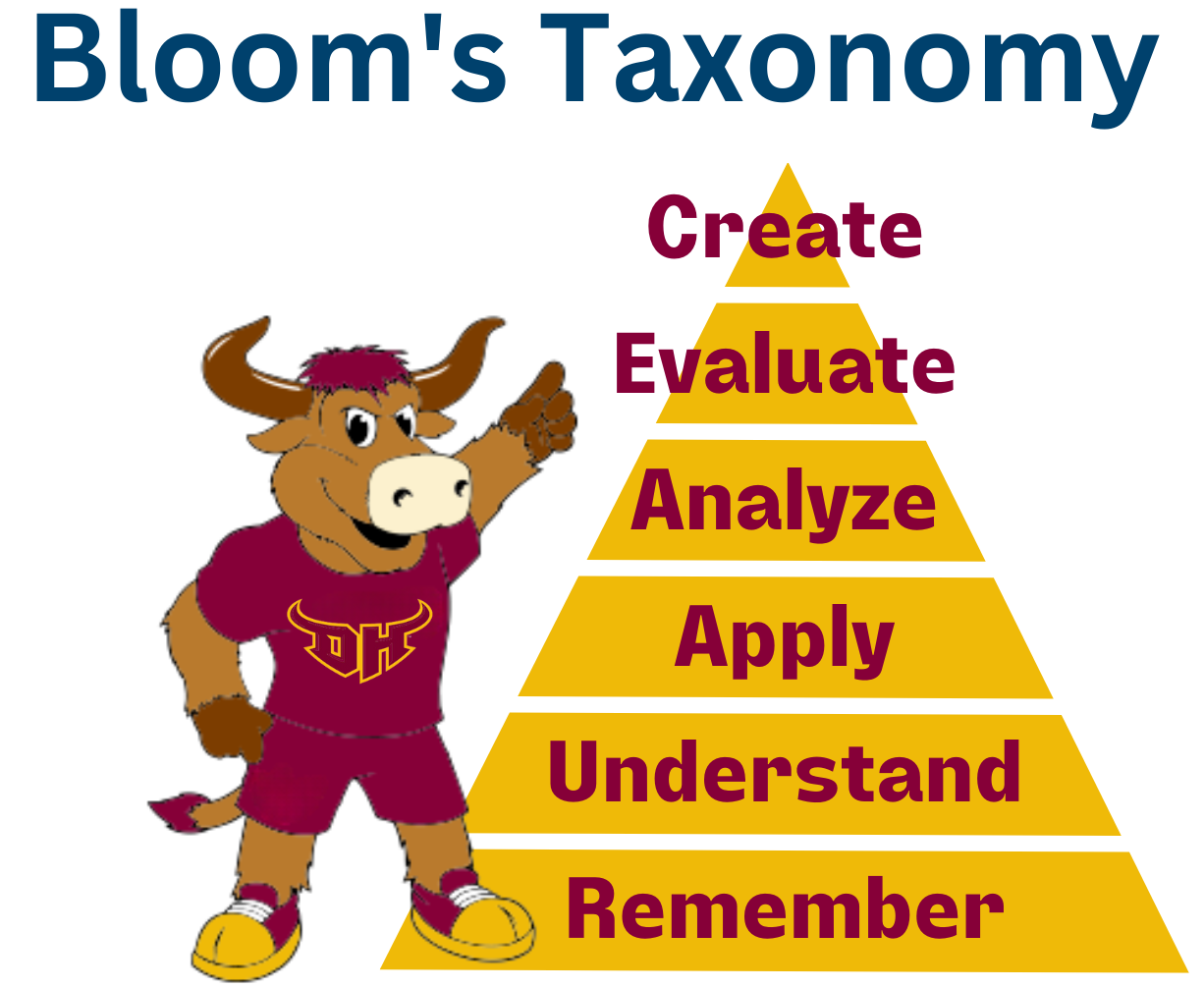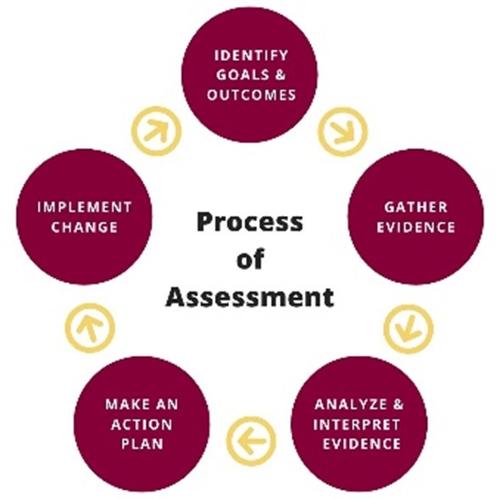Different Types of Outcomes
For ease in explanation, we are presenting two different categories of outcomes:
- Operational/Program/Service Outcomes
- Learning and Development Outcomes
While the focus for each is different, they are all critical with Student Affairs work. Not all programs, services, and interventions use all these types of outcomes. Use what best fits what you are working on and what you are trying to accomplish.
However, when developing programs and services, these outcomes should be explored prior to and during program development to maximize the impact of the activity, event, program, intervention, etc.
Operational/Program/Service Outcomes vs. Learning/Development Outcomes
For ease, the main differences between an operational/program/service outcome and a learning/development outcome is participants/audience and learning.
- Learning/development outcomes have a specific audience/participation group they are trying to target, whereas operational/program/service outcomes do not discuss an audience. Audience/participants could be all students, transfer students, graduate students, participants of a certain department (EOP, QCRC, Athletics, etc.), staff, student workers, etc.
- Since learning/development outcomes have a clear audience, they are focused on what they hope that audience learns. However, operational/program/service outcomes' foci are not about learning, rather the result/impact of a program, intervention, policy.
| Operational/Program/Service Outcomes | Learning/Development Outcomes | |
| Definition | "Operational outcomes--also called administrative outcomes, service outcomes, [program outcomes,] or outputs--are metrics that document how well the operational aspects of a program or an activity are functioning; however, they do not document learning, development, or the overall impact of a program or service" (Henning & Roberts, Student Affairs Assessment: Theory to Practice, 2016, p. 88). | "Learning and development outcomes are desired learning and development effects of a program, a service, or an intervention, but are more specific than goals and are result-focused and participant-centered...They are what students [or other participants] are expected to know or do" (Henning & Roberts, Student Affairs Assessment: Theory to Practice, 2016, p. 89). |
| Description | Program/Service Outcomes (PO/SO) identify critical and central services, processes, and functions expected of a department and the desired quality. PO/SO examines what a unit will do, achieve, or improve to demonstrate operational effectiveness; for example, assessment of timeliness of responses, satisfaction with customer service, efficiency of resource utilization, etc. | A Student Learning Outcome (SLO) is a statement that describes the desired result of a student engaging with this unit’s programs or initiatives. It should contain an action verb and be measurable. SLOs examine cognitive skills that students (or other stakeholders) develop through department/group memberships, interactions, programs, and services; i.e., assessment of what students will know (knowledge), do (skills), or believe (dispositions). |
| Typical Usage | Examples of PO/SO include assessment of timeliness of responses, satisfaction with customer service, number of programs a department offers, efficiency of resource utilization, average attendance at an event(s), speediness of service, etc. | Examples of learning and development outcomes include measuring an increase in a skill, a decrease in a behavior, identification or usage of a resource, increased confidence or persistence in an area, etc. |
| Example Outcomes |
|
|
| Formula* | As a result of (policy, programing, intervention, etc.) (desired result) in (location, department, etc.) will (specific qualifier/degree) by (timeframe). | (Participants/audience) who ________ will be able to (action verb) (behavior/expected learning) (specific qualifier/degree) by (timeframe). |
*The formulas above are only guidelines for those getting started and are definitely not the only ways to write outcomes. As long as your outcomes are "SMART" (see below), you are on the right track.
Help with Action Verbs: Bloom’s Taxonomy
If you are creating a learning/development outcome, and you need help with creating an action verb, borrow from Bloom's Taxonomy.
Be mindful and realistic with which word you use, however. For instance, during a stand-alone, one-hour workshop, it may not be realistic for participants to create something new. Furthermore, during undergraduate studies, it is rare when a student achieves the "create" level of Bloom's Taxonomy because while they may often produce products, many times those products are a depiction of an evaluation, analysis, application, or understanding of a topic. A thesis is an example of something a student may produce at the "create" level since it is a new and original work.
 Create: assemble, construct, create, compose, design, develop, formulate, hypothesize, invent, plan, produce
Create: assemble, construct, create, compose, design, develop, formulate, hypothesize, invent, plan, produce- Evaluate: appraise, argue, citizen, defend, judge, recommend, select, support
- Analyze: categorize, compare, contrast, differentiate, discriminate, distinguish, question
- Apply: choose, demonstrate, employ, illustrate, operate, sketch, solve, use, show
- Understand: describe, discuss, explain, report, give example, paraphrase, summarize
- Remember: describe, recognize, list, recall, repeat, label, identify
Make Sure Outcomes are SMART
Whichever outcome you choose to write, make sure it adheres to the SMART Outcomes checklist below:
| S | Specific
|
| M | Measurable
|
| A | Achievable
|
| R | Realistic
|
| T | Timely
|
Ensure Equitability
When you are creating outcomes, ensure they are as equitable and inclusive as possible. The National Institute for Learning Outcomes Assessment (NILOA) (2020) states that for assessment to improve student learning and authentically document what students know and can do for today’s diverse students, an equitable and culturally responsive approach to assessment is needed.
Follow the checklist below to ensure equitability when creating outcomes:
- Check biases and ask reflective questions while creating and finalizing outcomes to address assumptions and positions of privilege.
- Include the perspectives of those affected by the outcomes (students, staff, etc.) and modify outcomes based on those perspectives.
- Make evidence-based changes that address issues of equity that are context-specific.
Example
Below is an example of an outcome written in a way that might unintentionally exclude some participants/students and its more equitable version.
- Inequitable learning outcome: All students who need internet access will be able to connect to the internet from their house in order to complete their current coursework and access campus resources.
- Equitable learning outcome: All students who need internet access will be provided a mobile hotspot in order to complete their current coursework and access campus resources.
Notice that the equitable version does not have an assumption of a student's living situation like the inequitable version did ("their house"). The introduction of a "mobile hotspot" in the equitable version is also a more inclusive solution (albeit idealistic due to resources) since students do not need transportation to use the solutions of campus internet or a stable home to use low cost or free wifi at their residence.
